Verdict
The Amazfit GTR 4 is packed with features of both fitness and smartwatch varieties and more than competes at this price point. It’s still not the slickest operator in the software department, but if Amazfit can settle on a design approach, continue to improve on-watch smarts and bring in some big apps, it will have a very solid, affordable smartwatch on its hands.
Pros
- Packed with features
- Good sports tracking
- Improving smartwatch support
Cons
- App store still mainly native apps
- No music streaming service support
- Ugly physical buttons
-
150+ sports modesA wide variety sports options for your workouts -
Up to 14 days of battery lifeYou won’t be charging every night -
Music playback and storageSomething often missed out
Introduction
The Amazfit GTR 4 is the newest addition to what Amazfit refers to as its Fashion range. That line also includes the GTS 4 Mini and GTS 4 – the square equivalent of the GTR 4.
For the GTR 4, Amazfit is switching things up in the design department and bringing in smarts that appeared on its GTR 3 Pro and T-Rex 2 outdoor watches. This includes a built-in music player and a more accurate dual-band GPS tracking mode along with the same promise to last weeks as opposed to days in-between charges.
Because of its price, the GTR 4 goes up against Android and iOS-friendly smartwatches like the Fitbit Versa 4, Versa 3 and the Huawei Watch GT 3. So can it match or surpass what Fitbit and Huawei currently offer?
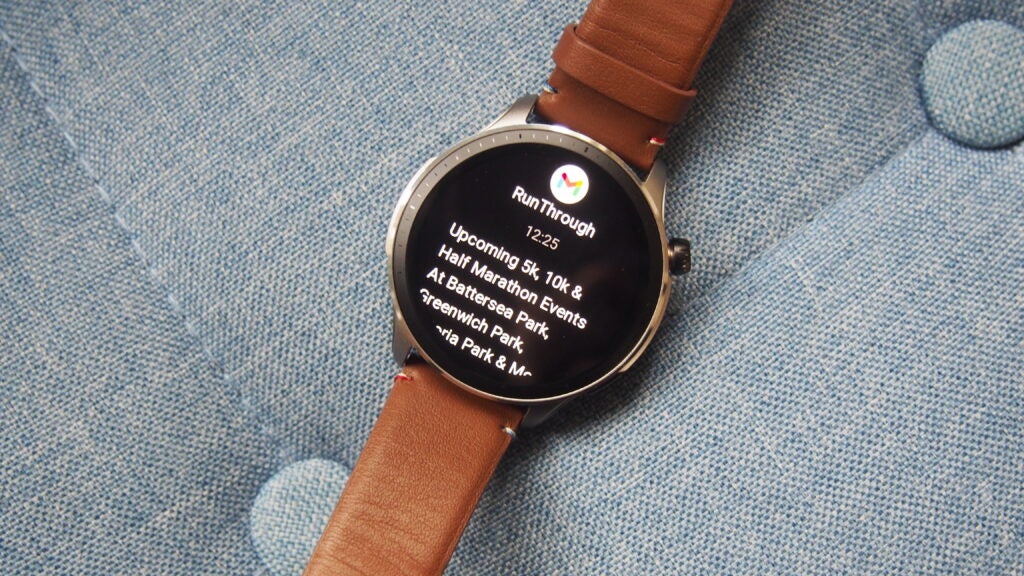
Design and Screen
- Available in two designs
- Waterproof up to 50m
- 1.43-inch AMOLED display with always-on mode
With its more classic-watch-inspired look, the Amazfit GTR 4 feels like the design successor to the GTR 3 Pro – as opposed to the GTR 3’s sleeker, more minimalist appearance.
The GTR 4 has a 46mm aluminium alloy case with a 22mm quick-release strap and two physical buttons on the right side of the case. It’s a reasonably sleek and svelte-looking smartwatch, but it doesn’t necessarily bring anything new to the table. And those buttons stick out in a less-than-attractive way. The twisting crown features a red dot, which feels like an odd nod to Apple Watches. The GTR 4 is certainly a well-made smartwatch, but is it a design classic in smartwatch terms? Not really.
What Amazfit does get right is delivering something that feels slender and nicely weighted to wear day and night. It’s 10.6mm thick – so slightly slimmer than an Apple Watch Series 8 – and at 34g, it’s roughly the same weight as a 41mm Series 8 with an aluminium case.
Amazfit has managed to incorporate some very good displays into its smartwatches, including the GTR range, and this device gets a very good one as well. It’s now a larger, 1.43-inch, 466×466 resolution, AMOLED touchscreen display with a new anti-glare bezel to help improve things on the visibility front.
This touchscreen display goes bright, although the colours feel a bit oversaturated. But it’s nicely responsive to touch and the raise-to-wake gesture works well, too. On the whole, this watch offers good visibility both indoors and outdoors. If you want that screen to be always on, you do have that option here.
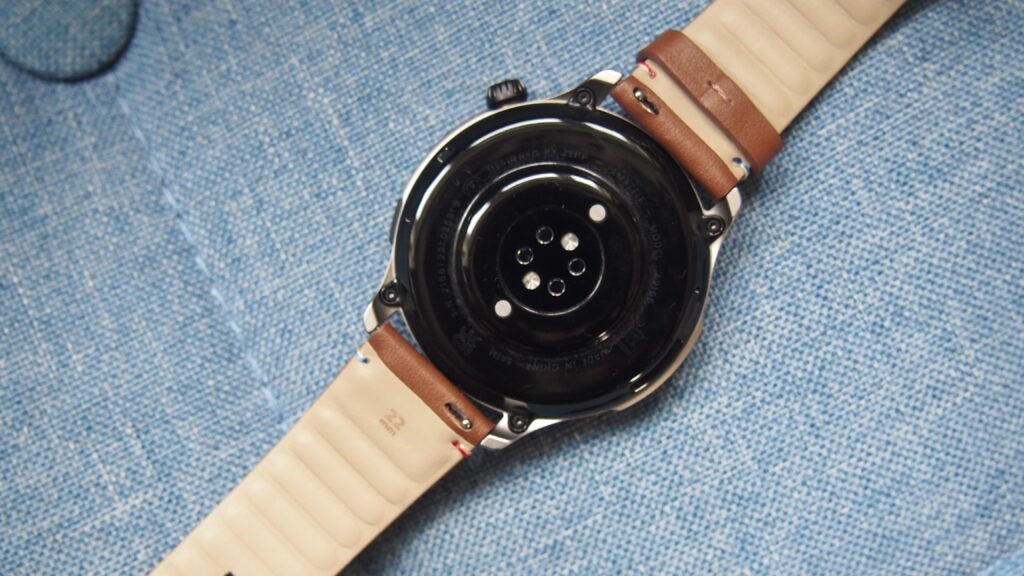
The GTR 4 is available in three different looks, with leather, nylon and fluoroelastomer strap options. I reviewed the vintage brown leather one matched with a silver case, which is certainly the most formal option of the three. But the leather strap has an exercise-friendly interior, so you can keep it on when you want to track your workouts.
Features and Performance
- Works with Android and iOS
- ZeppOS
- Built-in music player lacks streaming music service support
- App store has more apps but no third-party ones
Like with previous GTR watches, Amazfit keeps it in-house with its ZeppOS operating system. It has sought to deliver a more fully fledged smartwatch operating system by including elements like a dedicated app store. It’s certainly not on the Apple watchOS level of slickness, but there’s plenty to like – and not like.
Generally, Amazfit doesn’t reveal the kind of processing power its smartwatches pack, but the ZeppOS platform is designed to deliver smooth interactions and that’s certainly what you do experience here. There weren’t any worrying signs of lag, and it’s a very easy smartwatch OS and UI to get to grips with.
Away from the watch, you have the Zepp companion smartphone app, compatible with Android and iPhones. I predominantly used it with an iPhone 14. I had no issues in terms of getting things set up and successfully syncing data with the watch.
The app is made up of the main activity and fitness stats feed and a separate screen to tinker with watch settings. There’s a fair amount of settings, so it’s definitely worth spending some time here getting to know what is switched on out of the box and what needs to be set up after the watch is paired with a phone.
There is scope to connect to a handful of third-party apps here, mainly on the health and fitness front – with the likes of Apple Health, Strava, Relive and Adidas Running supported.
You can also connect the watch to Amazon Alexa, one of its two available smart assistants. It’s easy to get it set up, and you can make use of the onboard microphone to ask questions or set alarms, with the onboard speaker relaying the response. The reliability of dealing with queries is best when you keep things simple, such as asking for the weather, as opposed to questioning it about England’s first World Cup game, where it’s likely to fire out something from Wikipedia.
When the watch isn’t connected to the internet, you can make use of Amazfit’s own offline assistant, which makes it possible to open up different menus and start a workout via voice and is nicely responsive on the whole.
Amazfit also offers smartwatch staples, such as notifications (with quick reply support), viewing weather forecasts, setting alarms, accessing music playback controls and picking from more than 200 watch faces. It includes the ability to handle calls via Bluetooth, and there’s a built-in music player that lacks any sort of music streaming service support. Amazfit now also lets you add membership cards for shops that can be scanned to make sure you get your points or that big discount.
ZeppOS also features an app store and while there are more apps here than there were on the GTR 3 and GTR 3 Pro, they’re still the native kind, as opposed to the high-profile third-party ones. I tried out a few apps, such as the spine exercise and 7-minute workout ones, as well as the sports event app, which dishes out key fixtures from major US sporting competitions, and a more playful what-to-drink app. Downloading and installing the apps was swift, but if Amazfit could get some big names on here, it would help to make it feel more like a mature smartwatch platform. Right now, it’s more similar to Huawei AppGallery than Google Play Store.
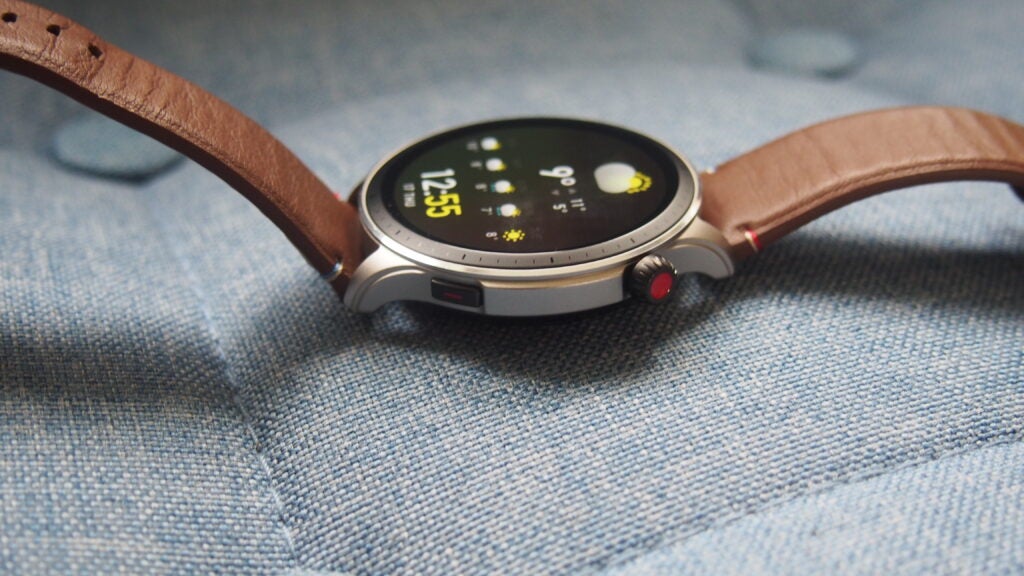
Fitness and Health Tracking
- 150+ sports modes
- Dual-band GPS
- PeakBeats training insights
- Route import and interval training templates
As a fitness watch, the Amazfit GTR 4 promises to do a lot and, on the whole, delivers a solid performance in most areas.
For starters, there are sports modes aplenty, with running, cycling, swimming (pool and open water) and indoor workouts, such as the elliptical and rowing machines, offering more workout-specific metrics. If you want to track a kickboxing session or a Zumba class, you can do that too – you just won’t get the same rich level of metrics as with those core tracking modes. There’s also automatic exercise recognition for up to eight activities, and this includes running, indoor rowing, pool swimming and outdoor cycling.
To make the GTR 4 a better fit for outdoor exercise, Amazfit has brought in features introduced on its T-Rex 2 watch. It has added a dual-band mode to give tracking accuracy a boost in problematic satellite signal areas, such as in the middle of a city with tall buildings or while being surrounded by lots of large trees.
Amazfit isn’t the only watchmaker to add dual-band GPS to its watches, but I’ve had a mixed experience with it on other brands’ watches. Based on my tests, I wouldn’t say the GTR 4’s dual-band performance was on par with the T-Rex 2. It was also a little off on distance tracking, compared with the Coros Apex 2, while metrics like pacing clocked me going quicker than average.
The other feature Amazfit brings over from the T-Rex 2 is the ability to import routes, to make use of breadcrumb navigation and help you get around. It’s relatively straightforward to get route files onto the app and watch. Then, you’ll have pretty basic navigation support, with a simple line and no sort of mapping. It might not be the best navigation support out there, but it worked well enough to get me where I needed to go and back home again.
The GTR 4 also has the ability to build plans for strength training, with support for automatic rep counting. If you prefer to up the intensity, you can build interval training plans for 10 sports modes.
The onboard heart rate monitor isn’t really suited for delivering dependable effort insights, as I found heart rate data to be pretty unreliable in general. It may have been the result of the less-than-stable fit I experienced with the leather strap at times. When it was nicely in position, it matched up well against a chest strap for steady-paced workouts.
It’s a bonus that you can now pair up external heart rate monitors, which is something Amazfit added in a software update. That’s good news for making use of Amazfit’s PeakBeats training insights, which aim to give you an understanding of your training load and aspects like VO2 Max to better assess your current fitness level. But these insights are only as good as the sensors that help drive those metrics, so I’d say grab a chest strap to make the best use of this guidance.
Away from sports, the GTR 4 performs well as a fitness tracker, monitoring steps and sleep with a good level of reliability. There are some new elements here, such as the morning updates, which sound like a riff off Garmin’s morning reports, aiming to give you a rundown of things like sleep and the weather forecast and highlight items in your calendar. Sleep and step data in general held up well against similar tracking I captured on the Oura Ring 3, although my daily heart rate definitely seemed a little on the high side, which, again, may have been tied to the not-so-perfect strap fit.
You can also track stress and blood oxygen levels and get heart-rate PAI (personal activity intelligence) scores, but overall, the GTR 4 feels more like a fitness watch than a health watch. It’s a better fitness watch than Fitbit’s Versa smartwatches, though not quite as slick as Huawei’s Watch GT 3. The GTR 4 also lacks the more user-friendly approach to general fitness, health and wellbeing that you would get from Fitbit.
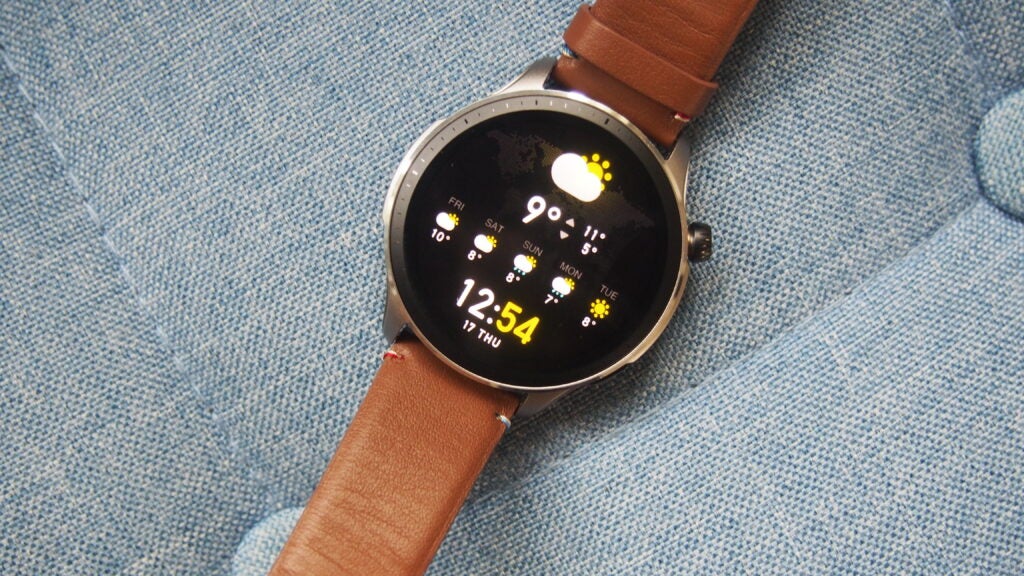
Battery Life
- Up to 14 days in typical use
- Seven days in heavy usage
- 25-52hrs GPS battery life
Amazfit’s previous GTR smartwatches have generally impressed with their day-to-day battery life performance, with the caveat that cranking up screen brightness, using it with the screen in always-on mode, and the level and accuracy of wellness and health monitoring you enable will affect it.
The numbers in general seem to be down from the GTR 3, particularly on the typical and heavy usage fronts. Amazfit says you should get up to 14 days in typical usage with the GTR 4, which is down from 21 days on the GTR 3, while heavy usage numbers are now seven days as opposed to 10 days.
I’d say that Amazfit is pretty generous with its battery claims, and in my time with the GTR 4, it has been good for about seven to 10 days. This means you get a solid week’s worth of use, which is still better than a lot of the more expensive smartwatches.
Amazfit also includes an additional battery-saver (24 days) and clock modes (54 days), so you do have the ability to push things further in return for a more restricted experience.
The addition of that dual-GPS mode means you now also have the ability to choose between different GPS accuracy levels, which will impact the battery. According to Amazfit, the highest GPS accuracy gets you 24hrs of battery life, while a power-saving GPS mode will enable 52hrs. Based on my tests, the actual numbers were a little shy of those claims. I was getting closer to 20hrs in the highest GPS battery mode, but it’s still a better showing than many similarly priced smartwatches.
Like previous GTR watches, the GTR 4 uses a charging cable and cradle, which magnetically clips to two points on the back of the watch and will get you from zero to 100% in about 2hrs.
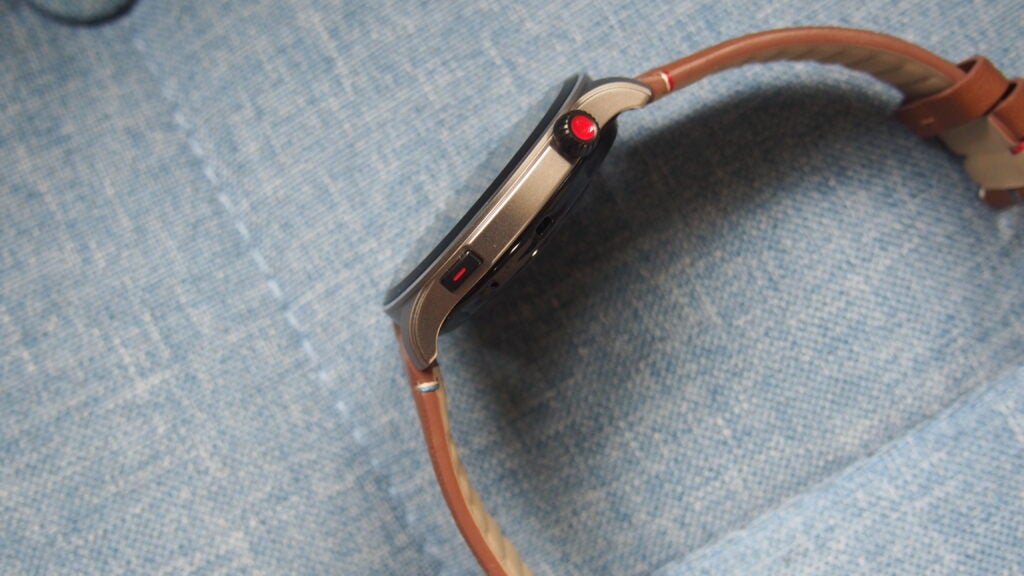
Should you buy it?
If you want a sporty smartwatch that doesn’t look sporty: Amazfit crams the GTR 4 with features like dual-band GPS, external heart rate monitor support and route importing, which give it solid credentials as a smartwatch to track outdoor and high-intensity workouts.
You want the best-looking smartwatch: Yes, there are some nice materials here, but it feels like a bit of a backwards step from the much sleeker, minimalist GTR 3.
Final Thoughts
Amazfit is clearly positioning the GTR 4 as a better alternative to the Fitbit Versa 4 and Huawei Watch GT 3. I’d say it can hold its own in most departments. It has solid fitness and sports tracking, improving smartwatch features and plenty of battery life. Where it’s not quite rivalling those other watches is offering a wholly polished, more mature-feeling software on and off the watch, and it hasn’t settled on a distinctive design.
While it’s great to have lots of features (and you do get a lot), delivering them all in an intuitive way is as important as their quantity, and the GTR 4 is slightly at risk of being overwhelmed by their number. But overall, it’s a good experience and shows that Amazfit’s watches are evolving in the right direction.
FAQs
Yes, you can connect Bluetooth headphones while using the smartwatch in the music player mode. It’s done from the watch settings menu.
The Amazfit GTR 4 is compatible with Android phones and iPhones running on iOS 12.0 or above.
Jargon buster
GPS
An abbreviation of the Global Positioning System, which uses satellite communication to pinpoint your location. Some smartwatches are able to achieve this communication without the use of a smartphone.
















